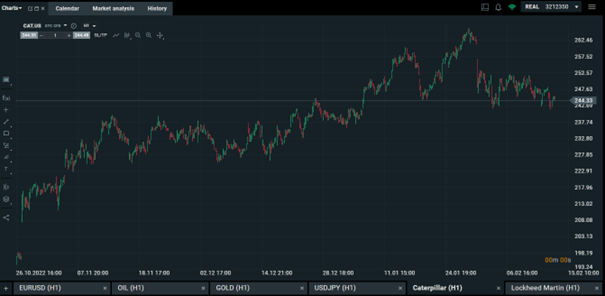I quickly opened the chart and checked what is the status of the stock. Despite the price being rather high, at 244 USD, the stock is after correction, which was pretty solid at 10%.* It also seems that the current price hit the support line, as it bounced back a few times and never crossed it. Now, if I would be conservative trader, I would wait to see whether the price will break the support line, or it will once again return back up. But since I have experience in fundamental and technical analysis, I thought to myself – earthquakes are happening now. If I will wait too long, it might be too late. I made a quick decision and decided to buy the stock immediately when US market opens up, since the stock is listed on the New York Stock Exchange.
Having the time until opening, I decided to check any other interesting news about the company itself. One of the best sites to do so, (for companies on US stock exchanges) is Finviz. I went to make another cup of coffee and jumped right into research. I opened the site, typed “Caterpillar” into search bar and clicked enter. Immediately, the first positive thing I noticed was P/E ratio (price-to-earnings). The lower it is, the better. Forward P/E for them is around 14. Which means that it will make a return on investment much earlier than the companies with higher P/E. At least in theory, markets work in a funny way sometimes. I scrolled down to the news section, and an article immediately caught my eye. The name was “Investors heavily search Caterpillar Inc.” on Zach’s. It just confirmed my speculation, that this is no-brainer at this time. Another article said that it is also one of the good stocks to buy for dividends. So, I shall not wait longer, and make a buy order immediately when US market opens.

* Past performance is no guarantee of future results.
Link to 5 year chart: https://www.investing.com/equities/caterpillar








